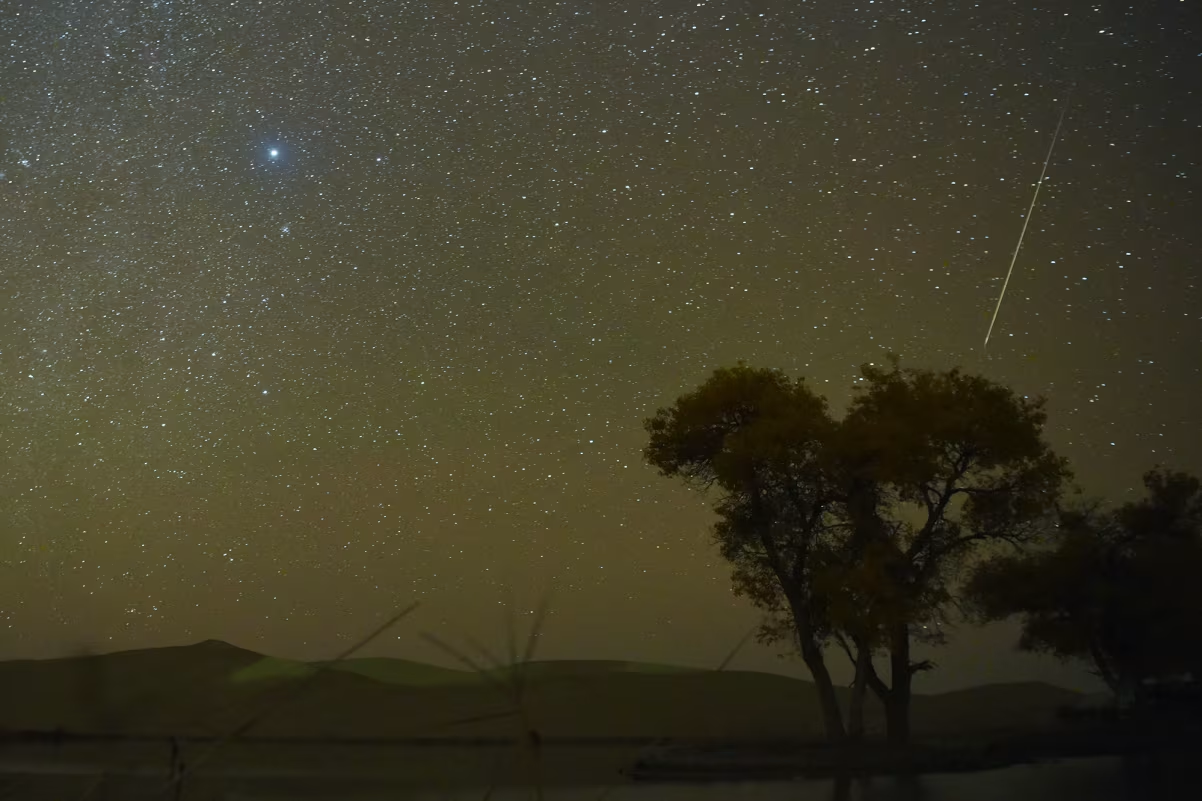Stargazers across the United States are gearing up for a spectacular celestial display this week as the Orionid meteor shower streaks across the night sky. According to EarthSky, the shower will reach its peak at 8 p.m. ET on Monday, offering bright, fast-moving meteors and the occasional fireball for those who take the time to look up.
The Orionids don’t have a sharply defined peak, so missing Monday night isn’t the end of the show. “If you happen to get clouded out on that night, don’t despair,” said Robert Lunsford, fireball report coordinator for the American Meteor Society. “Head out the next night, or even the next couple of nights, and you’ll see almost the same activity.”
This year’s Orionids coincide with a new moon, providing ideal conditions for stargazing. Without moonlight to compete, the meteors will appear brighter and more vivid. Under clear skies, viewers can expect to see 10 to 20 meteors per hour. Most meteors last only a fraction of a second, but the brightest leave persistent smoke trails known as “trains.”
In addition to the Orionids, sky-watchers might catch the slower Southern Taurid meteor shower, peaking November 4-5. “It’s kind of like they’re doing battle,” Lunsford explained, noting that the fast Orionids move westward while the slow Taurids drift eastward across the sky.
For the best viewing experience, experts recommend looking toward the southern sky around 10 p.m. Monday night or between 4 and 5 a.m. Tuesday morning, depending on your local time zone.
Where the Orionids Come From
The Orionid meteor shower occurs as Earth passes through debris left behind by Halley’s Comet (1P/Halley). Lunsford explained that Halley’s Comet crosses Earth’s orbit twice: producing the Orionids in October and the Eta Aquariid shower in May. The comet was last visible from Earth in 1986 and is expected to return in 2061.
Upcoming Celestial Events to Watch
Southern Taurids: November 4-5
Eta Aquariids: Early May
Whether you’re an avid astronomer or a casual stargazer, this week’s Orionid meteor shower offers an unforgettable glimpse into the wonders of the night sky. With a little planning and clear skies, anyone can enjoy the beauty of these streaking meteors from the comfort of their backyard or a nearby dark-sky location.

